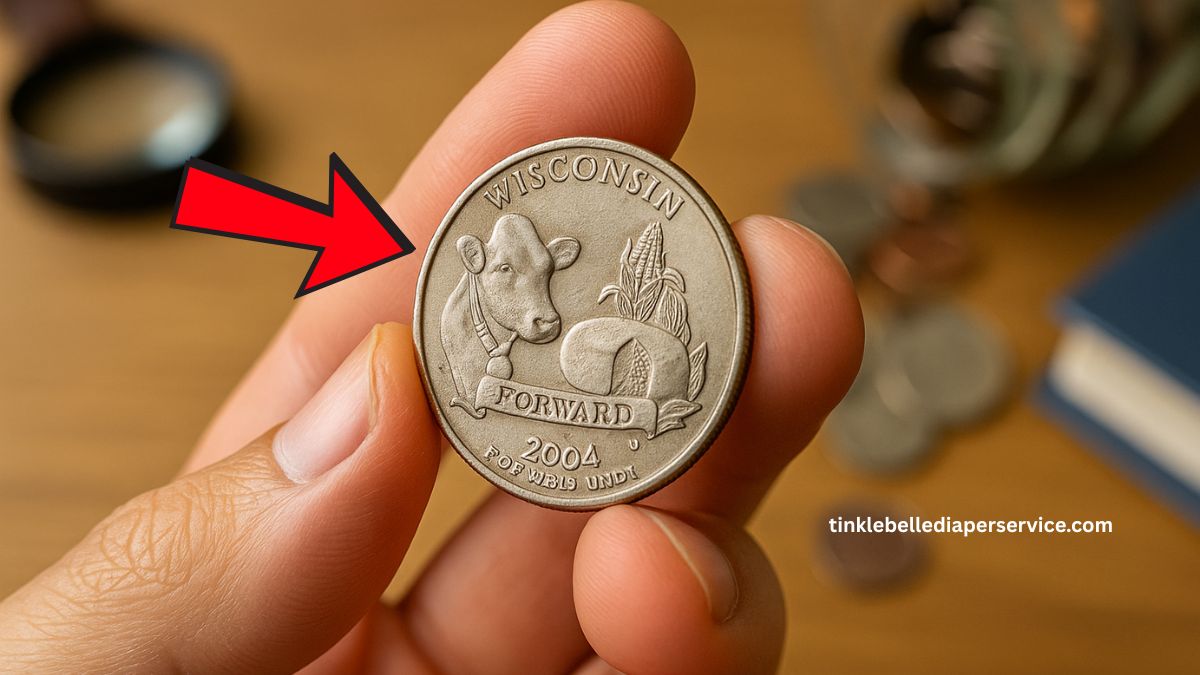In a surprising twist, a coin that many Americans have casually spent for years has suddenly become one of the most sought-after collectibles in the country. The 2004 Wisconsin State Quarter, part of the U.S. Mint’s 50 State Quarters Program, is now making headlines for its unexpected value.
While it may look like any other state quarter at first glance, featuring a cow, a wheel of cheese, and an ear of corn, a tiny manufacturing error has turned it into a hidden treasure.
The Secret Behind the Quarter’s Sudden Fame
The excitement centers around a small but significant flaw—an extra leaf on the corn stalk design. Two variations exist: the “High Leaf” and “Low Leaf” errors. These imperfections occurred during the die polishing process at the Denver Mint, resulting in a rare misprint.
While millions of standard Wisconsin quarters were produced, only a handful contain this mistake, making them highly valuable to collectors.
From Everyday Change to Unexpected Windfall
Stories are emerging of people stumbling upon these rare quarters in unexpected places—old coin jars, forgotten drawers, or even as spare change from everyday transactions.
One fortunate individual in Michigan reportedly sold their misprinted quarter for over $2,000 at auction, while others have seen online listings demanding even higher prices, especially for coins in pristine condition.
The discovery has sparked a nationwide search, with both seasoned collectors and casual coin-checkers sifting through their change in hopes of striking it lucky.
Why the Sudden Surge in Interest?
The renewed fascination with this quarter can be attributed to several factors, including economic uncertainty, a growing interest in collectibles, and the power of social media.
Platforms like TikTok, Reddit, and YouTube have amplified awareness, turning a once-overlooked coin into a viral sensation.
Collectors note that coins with minting errors, historical significance, or unique designs often see a spike in value once public attention shifts toward them—and the 2004 Wisconsin quarter fits all three criteria.
How to Spot the Valuable Quarter
If you’re eager to join the hunt, start by examining any 2004 Wisconsin quarters from the Denver Mint (marked with a small “D” beneath “In God We Trust”).
Focus on the left side of the corn husk—if you spot an extra leaf, either near the bottom (Low Leaf) or higher up (High Leaf), you may have a rare find. Experts also recommend checking the coin’s condition, as uncirculated or lightly worn quarters tend to command higher prices.
Value of the 2004 Wisconsin Quarter Errors
The value of these error coins varies significantly based on variety, grade, and demand. Here’s what collectors can expect:
| Error Type | Condition | Estimated Value Range |
|---|---|---|
| High Leaf | Circulated | $300 – $600 |
| High Leaf | Mint State (MS63+) | $800 – $1,800+ |
| Low Leaf | Circulated | $150 – $400 |
| Low Leaf | Mint State (MS63+) | $500 – $1,200 |
Note: Values can fluctuate based on market demand and coin condition.
A Reminder of Hidden Value in Everyday Objects
In an era where digital payments dominate, the sudden craze over a 25-cent coin serves as a charming reminder that treasure can still be found in the most ordinary places.
Whether it’s an old coin collection or a quarter received as change, there’s always a chance that something seemingly mundane could hold unexpected worth.
The 2004 Wisconsin State Quarter, once a common piece of pocket change, has transformed into a coveted collector’s item due to a small minting error. With values reaching up to $6,000, it’s a testament to the hidden treasures that can exist in everyday objects.
So, next time you receive a quarter in change, take a moment to inspect it—you might just discover a small fortune.
FAQs
How can I tell if my 2004 Wisconsin quarter has the error?
Look for a small “D” mint mark indicating it was minted in Denver. Then, examine the left side of the corn stalk for an extra leaf—either pointing upward (High Leaf) or downward (Low Leaf).
Are these error quarters still in circulation?
While many have been collected, some may still be in circulation. It’s worth checking your change, especially if you live in areas where these coins were initially distributed.
How can I sell a valuable error quarter?
Consider having the coin graded by a professional service to determine its condition and value. Then, you can sell it through coin dealers, auctions, or online marketplaces.
